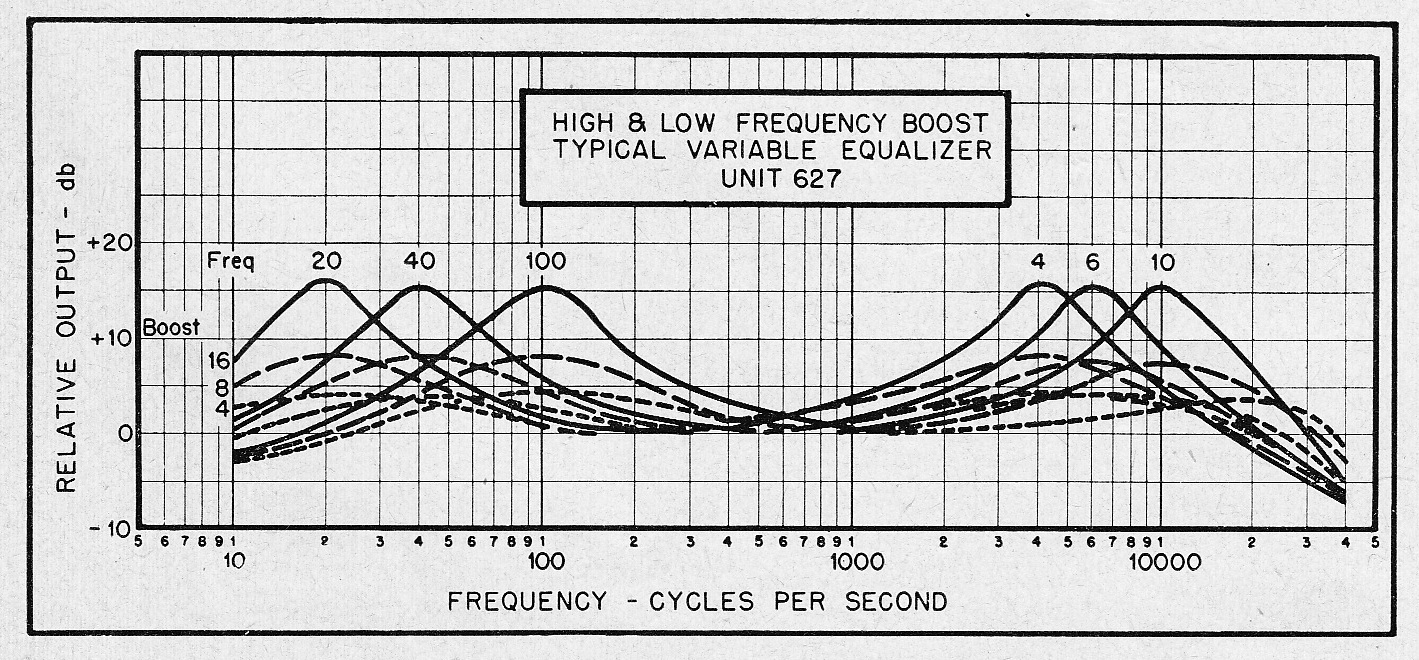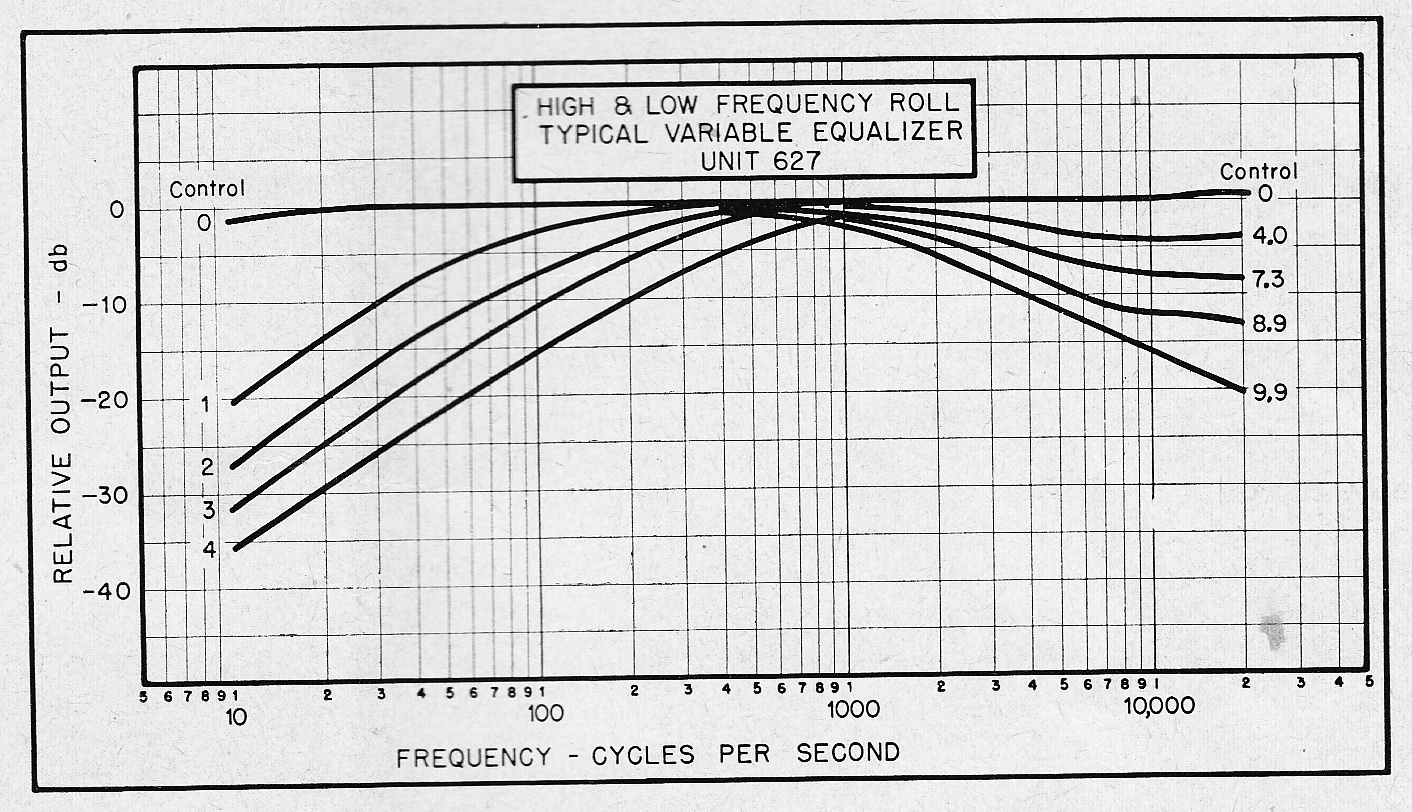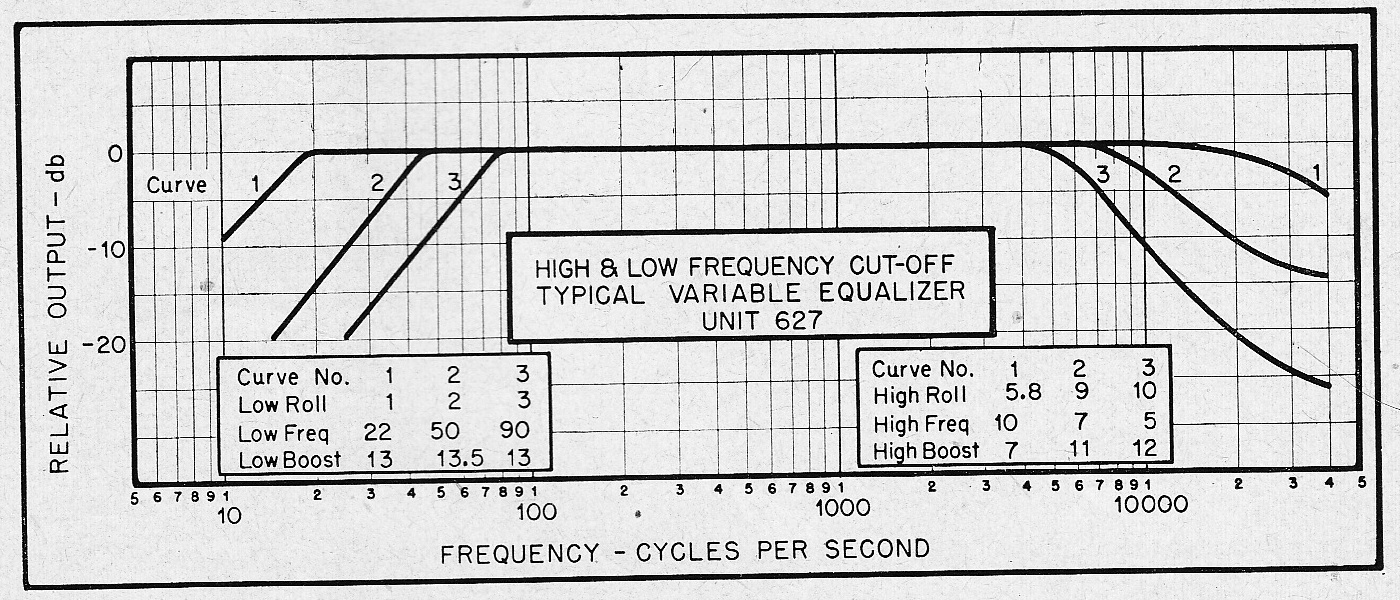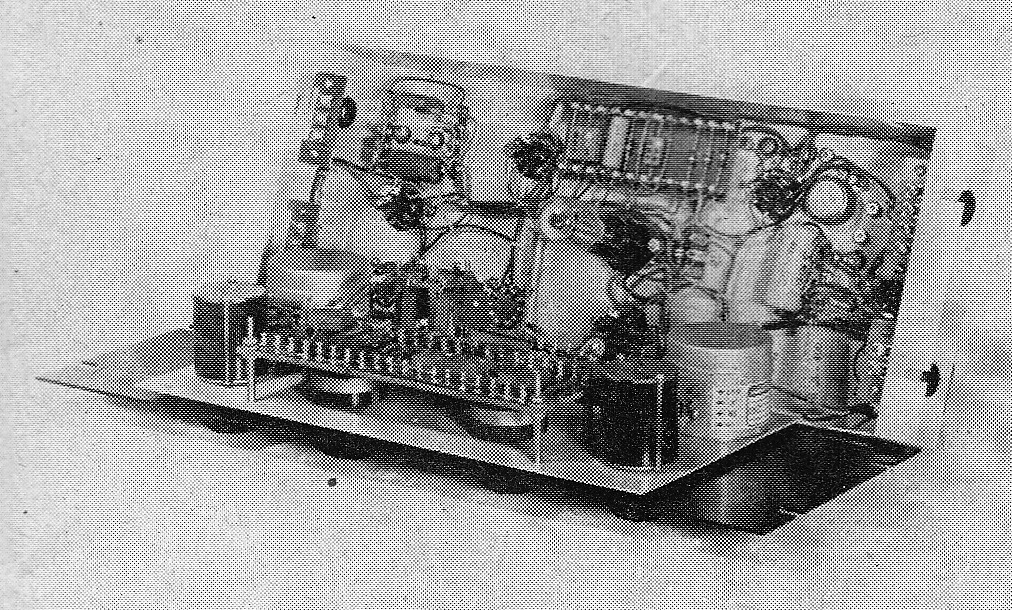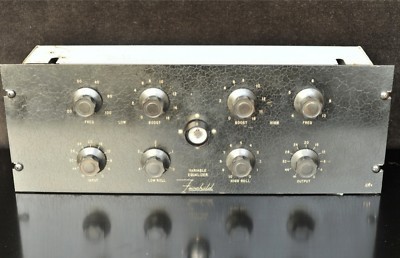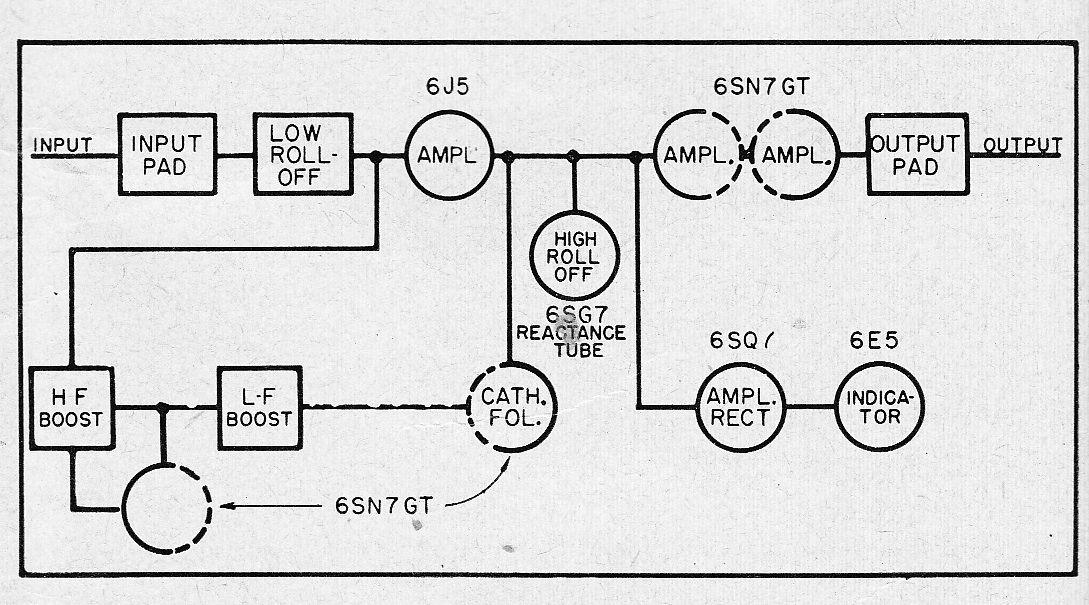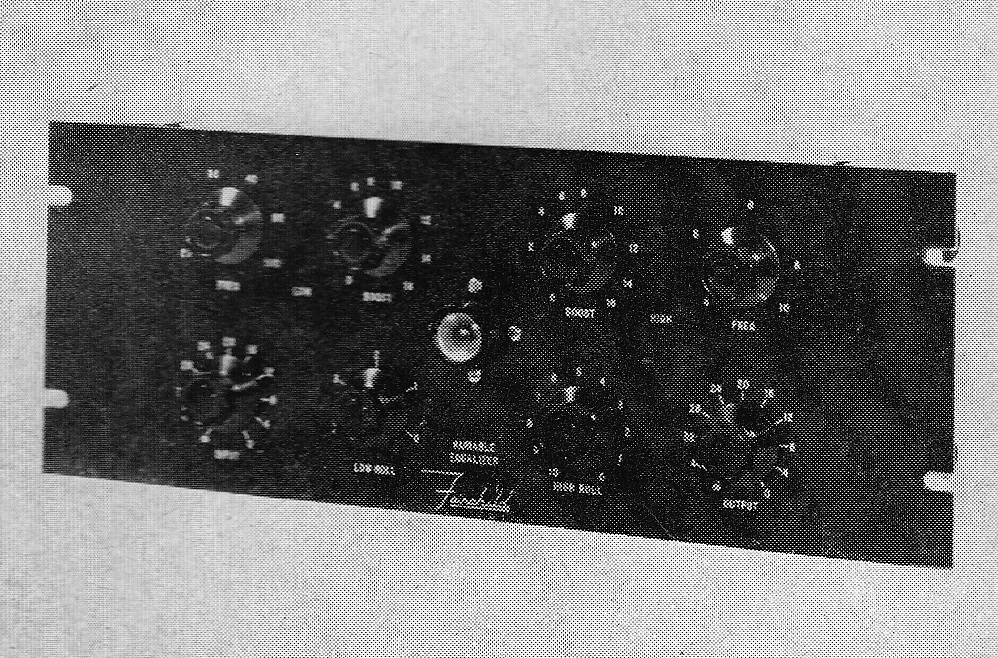 Apologies for the poor image quiality; these came from the research department of a long-gone British broadcast-gear-manufacturer via some dampish papers that I purchased recently from a rare-books-dealer in London. I had never heard of the Fairchild 627 ‘Variable Equalizer,’ even though I recently sold an example of its (even-more-rare) predecessor the model 540, which in retrospect seems to be the ‘boost’ sections of the 627 plus a mic preamp plus a 20-watt cutter-head power amp. Well shit. Now i wish I had measured the values of the triple-ganged frequency-select pots. Why? We will get to that in a minute.
Apologies for the poor image quiality; these came from the research department of a long-gone British broadcast-gear-manufacturer via some dampish papers that I purchased recently from a rare-books-dealer in London. I had never heard of the Fairchild 627 ‘Variable Equalizer,’ even though I recently sold an example of its (even-more-rare) predecessor the model 540, which in retrospect seems to be the ‘boost’ sections of the 627 plus a mic preamp plus a 20-watt cutter-head power amp. Well shit. Now i wish I had measured the values of the triple-ganged frequency-select pots. Why? We will get to that in a minute.
A quick google search suggests that there are thought to be only 5 Fairchild 627 equalizers in existence. One seems to have sold on eBay recently in the $7000 region. The 627 is a line-level EQ with continuously variable low and high bell boost sections as well as high and low roll offs. Unlike a Pultec, though, it is an active EQ, and it uses some pretty unusual circuitry – especially the high-cut section, which I don’t comprehend at all.
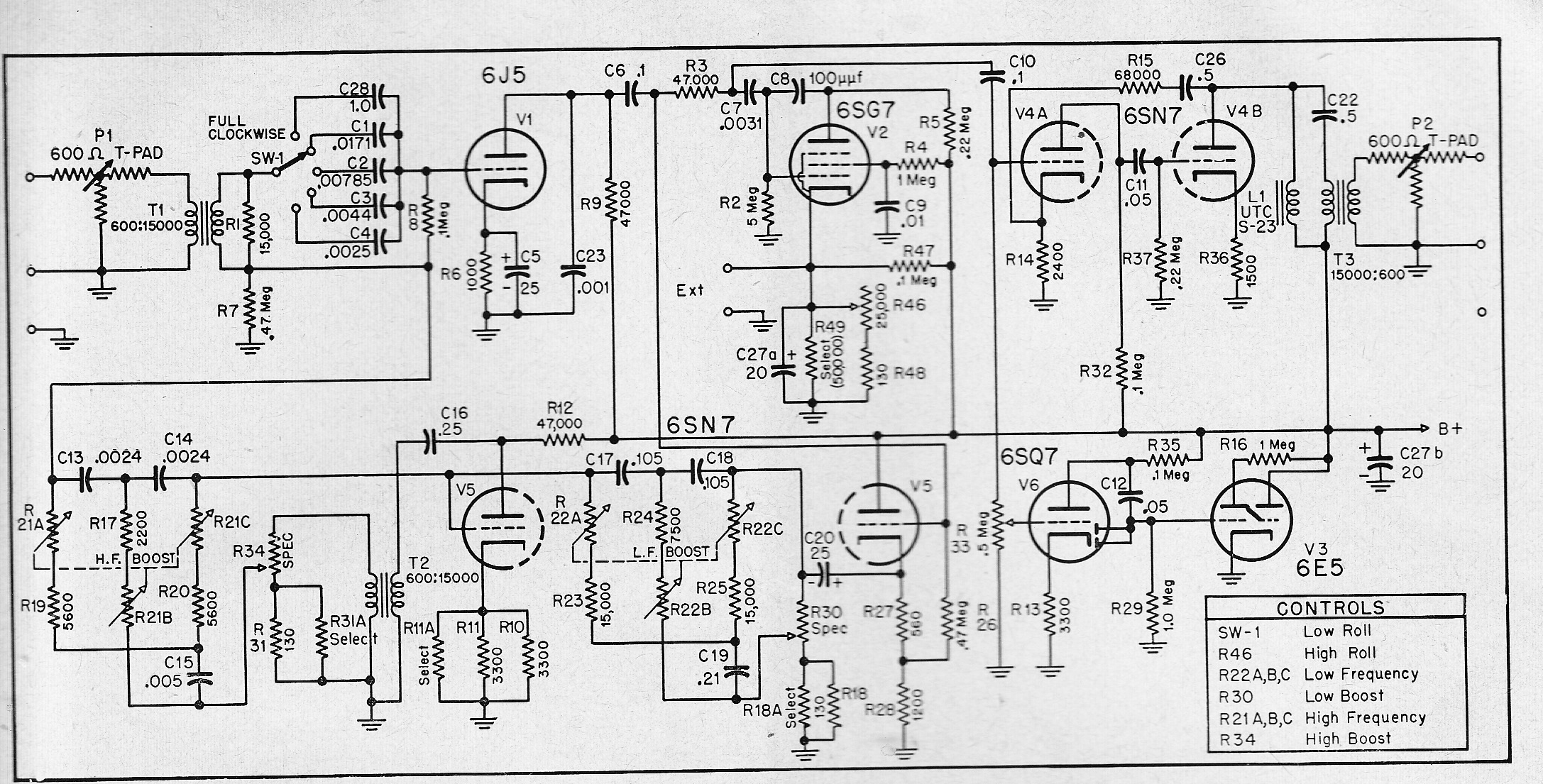 One point to note: T2 should be wired to reverse phase. I was v excited to find this schematic, because it seems like a pretty easy piece to build – there is no mention of the proper B+ voltage, but 250 is generally a safe bet; there are no weird inductors (the UTC S-23 plate-load choke is an off-the shelf part, so we know its specs -5000ohm DC, 300 henries); the audio transformers don’t need to handle DC and the turns ratios are spec’d: BUT: But. Those triple-ganged pots. WTF do we do about them?
One point to note: T2 should be wired to reverse phase. I was v excited to find this schematic, because it seems like a pretty easy piece to build – there is no mention of the proper B+ voltage, but 250 is generally a safe bet; there are no weird inductors (the UTC S-23 plate-load choke is an off-the shelf part, so we know its specs -5000ohm DC, 300 henries); the audio transformers don’t need to handle DC and the turns ratios are spec’d: BUT: But. Those triple-ganged pots. WTF do we do about them?
Can anyone crack this case? Any insights, pls let us know in the comments section.
On the plus-side: at very minimum, this schematic does reveal an excellent and easy way to implement a 6E5 seeing-eye tube simply paralleled to a grid in the audio path. So at very least, now i know how to use those v excellent things in my mic preamps. Way more evil than a VU meter.
Also: the 6SN7 output section is a neat little self-contained module; def worth trying it with a Hammond 156C choke and an Edcor 15K:600 1/2 watt. The 156C is the closest modern part to the S23 spec; it is rated 150h and 3.7K ohm, seems close enough? I used onna these on a hunch in my OP6-semi-clone and it worked just fine in that application, so I am guessing it may work fine here as well. 